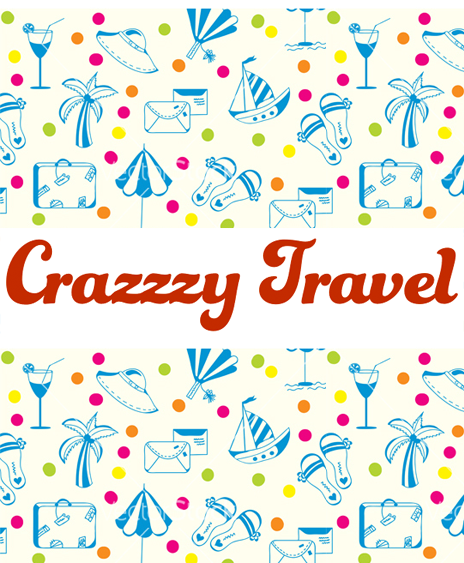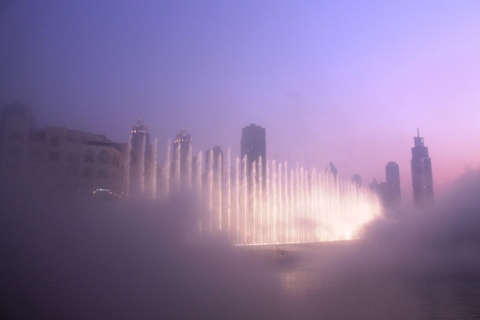Last June we spent 2 lovely weeks in Thailand. It’s a beautiful country with a lot to offer, but at the same time, for someone who doesn’t know certain things, it may cause some annoyances and even problems.
Here’s a list of 12 things we wish we knew when going to Thailand.
1. Visa

- Our Thai Visa
Most nationalities can get a visa on entry at any border either for free (if you are from the EU or North America) or for 1000 Baht ($30) for the period from 15 to 30 days. Apparently it’s pretty easy and fast (appr. 30 minutes). You may find more detailed info on the official website of the Thai embassy in the UK: http://www.thaiembassyuk.org.uk/?q=node/188
Since we wanted to enter Thailand twice (to visit Cambodia and come back) and didn’t want to pay double price, we applied for a visa in the Thai Embassy in Kuala Lumpur (Malaysia). Our visas were ready the next working day.
Tip: Come to the Embassy as early as possible in order to avoid waiting in a big queue.
2. Accommodation
Since we we’re not into luxury apartments, we always try to choose the cheapest & most comfortable options. While in Thailand, we changed several accommodations and were totally happy with each of them. In one of the next posts, we’ll tell you how to find your perfect place of stay.
Beach resorts (like Koh Samui or Phuket) offer a huge variety of huts, which are undoubtedly better than hostels in this case, since in addition to bed and private bathroom you get beautiful view and your own balcony (terrace). At Koh Samui we tried several accommodations, including the most popular Chaweng Beach (very crowded and noisy), and found our ideal bungalow on Lamai Beach in a place called Amadeus Bungalow. It included separate shower, free wi-fi, was clean, quiet, was located 2 minutes away from the beach, and cost us only 300 Baht ($9)/night, which was the cheapest we could find.
-

- Bungalow we stayed at in Lamai, Koh Samui, Thailand
When hiking in mountains you will probably stay in a large bamboo hut without electricity, bathroom, beds, windows, or anything one expects to see in the house. A must try; it’s a great way to experience how locals live. In addition to comfortable bamboo mat you will get a chance to listen to frogs’ chorus and watch flashes of wandering lights – for only 100-200 Baht ($ 3-6) per night!

- A hut we stayed at in Karen village, in the mountains not far from Chiang Mai.
In big cities (like Bangkok) backpackers usually stay in hostels, which are generally clean, have no bedbugs, and offer kitchen access. Double room might cost you 500-1000 Baht ($ 15 – $30). Since Bangkok is quite expensive, we preferred to couchsurf.
Tip: Rooms with windows are more expensive, but they happen to be more noisy and dusty, so don’t rent them.
In small towns (like Ayutthaya or Chiang Rai) budget travellers can even stay in a hotel, which won’t cost more than 700 Baht ($21), rooms are tidy and have big windows with nice views.
Tip: You can negotiate with a hotel manager and try to rent a single room and sleep on one bed – pay less, hug more. We did that in Chiang Mai and we liked it. 🙂
3. Transport

- Town of Ayutthaya. Doesn’t look like some random school bus, huh?
For short distances we highly recommend songthaew, which are basically small trucks with hedges in trunks. They are cheaper and sometimes faster than taxis. Intercity traveling is usually conducted on comfortable air con buses with large and colorful portraits of King of Thailand! Calculation of tariffs is pretty simple: 10 Baht per km.
4. Culture and religion

- White Temple in Chiang Rai or how modern architecture mixes with Buddhist traditions.
Thailand is an extremely religious country. That’s a great place to learn more about Buddhism and collect thousands of Buddha pictures.
Note: bananas and flowers, sold around the temples are for Buddha, not for you. Don’t buy them for personal use.
5. Food

- Fruit stalls in Chiang Mai
Food is cheap and tasty everywhere. Personally we recommend Pad Thai and various sausages on sticks. But the best part is fruits! Dinner usually costs no more than 200-300 Baht ($6-9).
6. Shopping

- Lovely pillowcases in Chiang Mai!
The best place for shopping is the North of Thailand (Chiang Mai and Chiang Rai). We loved local pillowcases, clothes, jewelry, shoes and lamps. Prices vary, but are generally low, so your average shopping should cost you no more than 1000 Baht ($30).
Note: don’t forget to bargain!
7. Take off your shoes everywhere

- Cute praying kids ^_^
When entering a hostel or a temple, take off your shoes (anyway, you will notice countless signs…). There are no touchable diseases on the floor, so don’t be afraid.
8. Cover your shoulders and knees while in Kings’ palaces

- Soldiers of King’s army: apparently, they are never cold!
The King of Thailand does not tolerate naked (or half-naked, or half-half-naked…) tourists, so you should dress appropriately: no knees, bellies and shoulders uncovered. Guards even put on gloves (it’s +30 outdoors, you know). In some museums women should also wear long skirts.
9. They have PANDAS!

- “Yes, I’m a panda and I’m not moving anywhere!”
Believe me or not, but the zoo in Chiang Mai (North of Thailand) has pandas (the only zoo in Thailand). In order to get to them you have to pay 100 Baht for general entrance and extra 100 Baht for panda entrance. But pandas are worth it, aren’t they?
10…. and elephants!

- Elephant show in the mountains near Chiang Rai
Thailand is the best place in the world to see domesticated elephants. Can you imagine an elephant can stand on its head? Elephant shows are available almost everywhere: near the beach resorts, in big cities and extended mountain areas.
Note: If you want to see the show for free, just quietly come with other tourists and take your sit: no one will tell the difference between you and those who paid. 😉
11. Tribes

- Kids of a Karen tribe don’t go to school. Instead, they are taught to make colorful scarfs for tourists.
The North of Thailand (yes, we enjoyed this part of the country the most) is home to numerous tribes, such as Karen (Long Neck tribes), Lahu, Lisu and many others. They are very hospitable; sell both their own unique goods and some adorable jewelry from Burma. Be sure to buy a beautiful and unique add-on to your wardrobe – and give a helping hand for people who are poorer than you.
12. Beaches

- Nastia on the Chaweng Beach!
South of Thailand has stunning beaches with coconut trees and lovely huts, just like in bounty dreams. But don’t be fooled: water is not crystal clear and sand is not unbelievably white. Every paradise has its limits. Beaches are not extremely clean and the most famous ones (like Chaweng Beach at Koh Samui) are pretty crowded. Our preference is Lamai Beach at Koh Samui: quiet, friendly and developed.
Have you been to Thailand? What was your experience?





















































